Small Group Experiential Travel
Tour Code
UP2
Start
La Paz (LPB)
End
Montevideo (MVD)
Tour type
Cultural
Max Group Size
18
When To Go
Apr, Oct, Nov
Activity Level
2 - Moderate
Overnight in
Buenos Aires, Salta, Posadas, Purmamarca, Santa Cruz De La Sierra, La Paz, Sucre, Potosi, Colchani, Asuncion, Encarnacion, Montevideo, Colonia Del Sacramento, Iguazu Falls, Leandro N. Alem
- Overview
- Info & Inclusions
- Itinerary
- Map & Hotels
- Photos
- Dates & Prices
Highlights
- Stark & dramatic southern Bolivia Altiplano
- Untouristed, charming Paraguay
- Colonial charms of Uruguay
- UNESCO protected Jesuit ruins
- Winery tasting & lunch
- Stunning and varied natural splendours
- Remote, breathtaking Northwest Argentina
- High Andes, coastal scenery, vibrant cities
Description
We've offered variations on this itinerary over the years and usually for only special one-off departures, so we're very excited to add Uruguay and Paraguay, combined with the wondrous landscapes and culture of southern Bolivia and the Altiplano, to our permanent roster of regularly-scheduled trips.
This itinerary is an amalgam of four very different, up-and-coming destinations - Uruguay is enjoying recognition as one of the best-governed, safest and most stable liberal democracies on the continent, with a friendly laid-back vibe and a vibrant emerging arts and culinary scene.
Paraguay is what parts of Argentina were like 30 years ago, with an un-touristed and authentic colonial charm.
Northwest Argentina, with its isolated and distinct Andean culture, is one of the most "indigenous" regions in the southern Andes, and Bolivia constitutes the quintessential Andean experience.
The lifestyle here is laid-back and ruggedly elegant, with soaring peaks, plunging gorges, endless salt flats set as dramatic backdrops to leafy colonial plazas, chic galleries, trendy restaurants, and unfailingly friendly local smiles.
This itinerary is an amalgam of four very different, up-and-coming destinations - Uruguay is enjoying recognition as one of the best-governed, safest and most stable liberal democracies on the continent, with a friendly laid-back vibe and a vibrant emerging arts and culinary scene.
Paraguay is what parts of Argentina were like 30 years ago, with an un-touristed and authentic colonial charm.
Northwest Argentina, with its isolated and distinct Andean culture, is one of the most "indigenous" regions in the southern Andes, and Bolivia constitutes the quintessential Andean experience.
The lifestyle here is laid-back and ruggedly elegant, with soaring peaks, plunging gorges, endless salt flats set as dramatic backdrops to leafy colonial plazas, chic galleries, trendy restaurants, and unfailingly friendly local smiles.
Price Includes
- Breakfast daily, several lunches, and most dinners (hotels & local restaurants) as per the tour itinerary.
- All transport (including internal flights), accommodation, sightseeing and entrance fees for sites noted as 'visited' in the detailed itinerary.
- Gratuities for local guides, drivers, restaurant staff, porters.
- Domestic flights via local scheduled carriers as per the itinerary.
- Airport transfers for land & air customers.
Exclusions
- International airfare to/from the tour.
- Tour Leader gratuities, lunches, some dinners (per the tour itinrary), drinks, personal items (phone, laundry, etc), international (if applicable), visa fees/departure taxes, any excursions referenced as 'optional'.
- Airport transfers for Land Only customers.
- Our post-reservation trip notes offer further guidance on optional meal costs, entry requirements, and shopping.
Trip Info
- Seasonality and Weather:
This tour is offered twice a year: For both times, lower elevations benefit from cooler temperatures. In Bolivia, the start of the dry season, from April-May, has fewer crowds and still feels fresh from the recent rains. Oct-Nov are also dry but a bit warmer, as spring approaches and crowds disperse.
Elsewhere, we'll have warm-hot days on the coast and at lower elevations and comfortably warm days/cool nights at higher levels. We visit a large area on this trip and the conditions we encounter will be quite varied -- from cool/cold and dry higher regions of the Andes (subject to sudden showers), to lush forests and semi-tropical inland and coastal regions. Overall, however, these are two of the best times to visit these destinations, before the height of summer when it can be hot, crowded, and expensive in some locales. - Transport and Travel Conditions:
Ground transport by private air-conditioned motor coach, 24-36 seats depending on ultimate group size (see 'group size') and location. Though we will have some full bus days, roads are generally in good condition (rougher in NW Argentina) though a little winding on some stretches. In the Bolivian Alitplano, we'll be divided between several comfortable 4x4 vehicles.
We feature numerous optional walking opportunities and walking tours on uneven surfaces. This tour is not strenuous in terms of physical activities, but in order to fully enjoy and experience the sites visited, you must be prepared for considerable walking at a leisurely pace.
Hotels generally provide baggage handling, but you must still be independent with your luggage.
We also have a couple of internal flights via domestic carriers, which can in itself be fatiguing (you will have to be able to manage your luggage). This is definitely a full itinerary with plenty of moving around!
One important consideration is the time spent at high altitude in Bolivia during the first week of the tour. We will be above 3100m/10,000 and, in some locations, above 3600m/12,000 ft. Travellers with pre-existing medical conditions should consult their physician; we will visit some very remote locations with limited access to healthcare. As such, all travellers will be required to complete a medical "self-assessment" form in order to affirm their suitability. To preview this form, please click on the "Resources" tab at the top of this page.
Our "Level 2" rating refers to the overall ambitious nature of the program, the tremendous amount of moving around we do, some early starts and full days of travel and activities, leisurely walks at sites and short walks to dinner, and a brief time spent at high elevation.
Am I suitable for this tour? Please refer to our self-assessment form - Accommodation:
Well-located, air-conditioned/heated, upper-range hotels and inns (3-5* star) used throughout. All hotels have en suite toilet and bath, though some may have shower only (ie no tub). Porter service is usually available (see 'inclusions') though you should be independent with your luggage, especially at airports. Single rooms are limited in number and likely smaller than twins.
* Please click on "Map & Hotels" tab for more information. Note that some of our preferred hotels in Bolivia rate themselves 5-star based on a local rating system; internationally, they might be considered more of a 4-star.
Please click on "Map & Hotels" tab for more information - Activity Level: 2
These are particularly busy tours that feature a lot of moving around, sometimes by train and short journeys on local transport. Walking tours of towns and cities are leisurely but you should be prepared to be on your feet for several hours. Some of our cultural trips that occur at high altitude and/or require greater independence with baggage handling (at hotels, airports, train stations) also fall into this category.
To learn more about the Activity levels, please visit our tour styles page. - Staff and Support:
Tour Leader throughout, local guides at several locations, multiple drivers. - Group Size:
Maximum 18 plus Tour Leader
Download Itinerary
- Day 1:Arrival in La Paz, BoliviaToday we arrive in the city of La Paz, one of the world's highest major cities, located at 3686 m (12,090 ft) above sea level. La Paz is situated in a bowl-shaped canyon in the Cordillera Real (Royal Range) of the Andes. As one travels across the Altiplano, the ground suddenly drops away 400 m (1,312 ft) to reveal the city hidden in a bowl in the mountains.
We suggest that you take it easy today in order to Acclimatize to the high elevation (if your flight arrives late today, you might consider arriving a day early in order to rest).
Overnight in La Paz.
Included Meal(s): Dinner - Day 2:La Paz: City TourLa Paz is rightfully famous for its mountain setting; indeed the mountains surrounding La Paz soar to an average of 5500m (18,040 ft) above sea level. The most spectacular views of the city come on a clear evening when one can see the twinkling lights of the city stretching up the hillsides, under the snow-capped triple peak of Mount Illimani at 6402 m (21,000 ft).
Today we'll explore the well-preserved Spanish colonial quarter of the city where we will visit the Precious Metals Museum and the Murillo Museum. Our tour continues to Plaza Murillo where the Cathedral, the Government Palace, and the National Congress buildings are located.
Later we walk through the unusual Mercado de los Brujos, better known as the Witch's Market, where you will see all sorts of potions, herbs, and folk remedies used to guard against evil spirits; the market provides a fascinating window on the secretive world of Andean mysticism. Here (and elsewhere) you may observe the colourfully-dressed native Quechua and Ymara-speaking people. The women wear many layers of petticoats covered by a colourful dress, and over their shoulders they sling a multi-coloured striped blanket called a 'phulla' in which they carry their groceries or babies -- or both! On their heads they wear a bowler hat (which always appears to be too small) at a jaunty angle. The British brought the bowler hat to Bolivia when they were building the railway and somehow it became part of the everyday dress of Andean women.
A must in La Paz is to take a ride on the city's iconic cable car, from which we enjoy fantastic views. We finish today's tour with a visit to the spectacular Valley of the Moon, named for its bizarre geological formations.
Overnight in La Paz.
Included Meal(s): Breakfast and Dinner - Day 3:La Paz: Lake Titicaca & Isla del SolAn early start today takes us to Copacabana, site of religious pilgrimage, beginning with the Incas. Every year, hundreds of thousands of pilgrims travel from distinct parts of Bolivia and other Latin American countries to take part in religious festivals in Copacabana. Legend says that if the statue is removed Lake Titicaca will rise up and flood the whole Altiplano region.
After a brief visit, we board a catamaran for our exploration of Lake Titicaca and Isla del Sol. This is the most important of the thirty-six islands in the lake. Lake Titicaca, South America's largest lake, straddles the Bolivia-Peru border and is said to be the highest navigable body of water in the world at an altitude of 3810 m (12,497 ft). Lake Titicaca was once much larger than the 8560 sq kilometres (3,305 square mi) it occupies today; indeed the great city of Tiahuanaco was built at the edge of the lake, but today it is more than 25 km (15 mi) from the lake! This reduction in the lake size has had a tremendous effect on the climate of the Altiplano region over the past 1,000 years and has made this cradle of cultures able to support far fewer people today.
Our itinerary continues with a stop at the Inti Wata Cultural Complex, which includes several sections with informative displays on traditional medicine, traditional living, and reed ship building. The complex also includes a unique sailing experience aboard a huge traditional reed vessel for a panoramic visit to the Pilkokaina Inca Palace.
We return to the catamaran for a buffet lunch on board, after which we make our way back to La Paz. Please note that, due to our early start, large lunch, and possible early start tomorrow, we do not include dinner this evening.
Overnight in La Paz.
Included Meal(s): Breakfast and Lunch - Day 4:La Paz: Tiwanaku RuinsToday we visit the epic city of Tiwanaku, the capital of an ancient civilization and Unesco site, located 72 km away from the city of La Paz near the south-eastern shores of Lake Titicaca.
The Tiwanaku Empire (also Tiahuanaco or Tihuanacu) was one of the first imperial states in South America, dominating portions of what is now southern Peru, northern Chile, and eastern Bolivia for approximately six hundred years (500–1100 CE). During its greatest times, Tiwanaku was the largest city in the world and considered to be the cradle of all American civilizations. The city lies in the high river basins of the Tiwanaku and Katari rivers, at altitudes between 12,500–13,880 feet (3800-4200 meters) above sea level. Despite its location at such a high altitude, and with frequent frosts and thin soils, perhaps as many as 20,000–40,000 people lived in the city at its heyday.
After 700 years, the Tiwanaku civilization disintegrated as a regional political force. This happened about 1100 CE, and resulted, at least one theory goes, from the effects of climate change, including a sharp decrease in rainfall. There is evidence that the groundwater level dropped and the raised field beds failed, leading to a collapse of agricultural systems in both the colonies and the heartland. Whether that was the sole or most important reason for the end of the culture is debated.
On our tour we will visit the Kalasasaya (Sun) temple, the semi-subterranean Earth Temple, the Akapana Pyramid, and the legendary Sun Gate. Our tour also takes us to the museum featuring ceramic objects and tools from civilizations prior to the Incas.
Return to La Paz.
Overnight in La Paz.
Included Meal(s): Breakfast and Dinner - Day 5:La Paz - Fly to Sucre - Parque Cretacico - SucreThis morning we fly to Sucre, the most beautiful city in Bolivia.*
Whether you call it Sucre, La Plata, Charcas, or Ciudad Blanca, the city of Sucre has a rich, varied history and a wealth of historical architecture deserving of its selection as a World Heritage Site by UNESCO. Sucre shares capital city status with La Paz as the legislative and administrative capital. This is the constitutional capital and home of the Supreme Court; it is also a university city with many cultural attractions. Sucre is also home to a large indigenous population who maintain their traditional clothing and customs and sell their crafts and goods available in the markets.
We begin our day with a visit to a relatively new attraction -- a set of dinosaur tracks (Parque Cretacico), discovered by accident in 1994 in a cement quarry 10 km (6 mi) from the city. The tracks are almost 70-million years old, from the Cretaceous era when a diverse population of dinosaurs were living on and stomping around in, the soft clay shores of a vast ocean inlet which covered large areas of Argentina, coming as far inland as Sucre.
After a break for lunch, we'll tour Sucre, visiting the House of Freedom Historical Museum and the Treasure Museum (Museo del Tesoro), with its displays of precious and semi-precious stones. We also include the the Asur Textile Museum and the outer facades of the churches of San Lazaro and Santo Domingo, the main historical monuments and Bolivar Park.
* Please note that this will likely be a "painfully" early departure owing to the lack of flights (one morning, one late afternoon). Though not ideal, a morning flight serves our purposes/itinerary better than the alternative. Please also note that the changeability of internal flight times over the next (up to and including our flight to Asuncion) could result in adjustments to the final itinerary.
Overnight in Sucre.
Included Meal(s): Breakfast and Dinner - Day 6:Sucre - Potosi - ColchaniThis morning we continue by road to Potosi (+/- 3 hours), a UNESCO World Heritage Site. The discovery of ore in silver-rich Cerro Rico ('rich hill') by Indian, Diego Huallpa, in 1544 prompted the foundation of the city of Potosi on April 10th, 1545 at the foot of the hill. At that time more than eighty-six churches were built and the city's population increased to nearly 200,000, making it one of the largest and wealthiest cities in Latin America and in the world. Potosi sits at an altitude of 4090m (13,500 ft) above sea level, and claims to be the highest city in the world. The area is well-known for its cool weather and sometimes even freezing rain!
On arrival we'll visit the city's principal sites, including San Lorenzo Church, where we will appreciate its beautiful façade. We'll admire the exterior of the Arch of Cobija and see the artisans' market in the colonial area of the city.
We'll also visit the Casa Nacional de la Moneda (National Mint),* one of two built to mint the silver coins used by the Spanish Empire. This impressive facility operated until 1953, or lasted for 400 years of continuous coinage. Most of the silver shipped through the Spanish Main came from Potosi. According to official records, 45,000 tons of pure silver were mined from Cerro Rico from 1556 to 1783. In Spanish there is still a saying, valer un potosi, "to be worth a potosi" (that is, "a fortune"). One theory holds that the mint mark of Potosi (the letters "PTSI" superimposed on one another) is the origin of the dollar sign.
After completing our tour of Potosi, we will continue onto our hotel in Colchani.
* We regret if our flight-driven itinerary changes closer to departure have us visiting places on a Sunday when some sites may be closed.
Overnight in Colchani.
Included Meal(s): Breakfast, Lunch and Dinner - Day 7:Uyuni: Area SightseeingIn the environs of Uyuni we will experience the highest and largest salar (salt lake) in the world (10000 sq km), surrounded by an impressive otherworldly landscape. On the lake's edge, visitors can see the local inhabitants extracting salt using ancient methods. En route we visit the villages of Chaquila and TikaTika.
After a lunch break, we visit the old railway depot in Uyuni, after which we continue to Colchani to see the artisans working on iodized salt. We visit to Incahuasi Island, located in the heart of the salt flat and the biggest of a group of islands that represents an isolated ecosystem. The island is populated with giant cacti species that measure up to 12 meters high (26.25 feet), providing an impressive overview.
Our hotel, located near Colchani village, is a regular facility with rooms, beds, a lobby and a dining room. Only one thing sets this hotel apart -- it's entirely made of salt! (Please don't lick the walls). After dinner you can stroll in the surroundings of the hotel and enjoy the stars in the unpolluted and cloudless skies.
Overnight in Colchani.
Included Meal(s): Breakfast, Lunch and Dinner - Day 8:Salar Uyuni Area SightseeingToday's 4x4 excursion takes us to the north side of Uyuni Salt Flat, where we take a look the Coquesa Mummies, human archeological remains in a little cave near to Tunupa Volcano. Ceramic, gold and copper artifacts, and articles of clothing have been discovered at some of the sites, indicating the presence of an advanced but little-known culture. Unfortunately, the sites' remoteness has left them vulnerable to amateur treasure hunters who have plundered several items of archaeological value.
As our visit coincides with the dry season (April to November), the salt flat surface provides the opportunity to play with photography and the salar's unique perspective.
We return to Colchani for overnight.
Included Meal(s): Breakfast, Lunch and Dinner - Day 9:Uyuni - Fly to Santa CruzToday we transfer to Uyuni's airport for our flight to Santa Cruz de la Sierra in order to connect with tomorrow's flight to Asuncion. Since we'll likely find ourselves with some time in Santa Cruz, we'll peel some layers and do some sightseeing upon arrival.
Located in the eastern part of Bolivia and sitting just over 400 meters above sea level, Santa Cruz enjoys year-round warm temperatures thanks to a semi-tropical savanna climate. Rich in oil and natural gas, forest products, and agriculture, the city enjoys a dynamic economy and alone generates over 35% of Bolivia's GDP.
We'll visit the historic centre of the city where we can appreciate the Minor Basilica of San Lorenzo, the Prefectural Palace, as well as the colonial architecture of the Bolivian east. We'll visit the Regional History Museum, with displays of local customs and the Chiquitana cultures.
Overnight in Santa Cruz.
Included Meal(s): Breakfast and Dinner - Day 10:Santa Cruz, Bolivia - Fly to Asuncion, ParaguayThis morning we fly to Asuncion -- welcome to Paraguay! Depending on our flight schedule we may fit in some sightseeing in Santa Cruz this morning or accomplish some Asuncion sightseeing upon arrival.
Asuncion was founded on August 15, 1537 -- the Feast of the Assumption, or Asuncion in Spanish. Take a step back and you'll see traces of the city that was once the colonial capital of southern South America. Asuncion is one of the oldest cities in South America and the longest continually inhabited area in the Rio de la Plata Basin; for this reason that it is known as "Mother of Cities." It was from here that the colonial expeditions departed to found other cities, including the second foundation of Buenos Aires and of other important cities.
Overnight in Asuncion.
Included Meal(s): Breakfast and Dinner - Day 11:Asuncion: City TourToday we explore one of South America's oldest capitals. The city still displays a definite colonial aspect with colourful patios and red tiled roofs. From the river's east bank, the city spans out into gentle hills that look like large rectangular blocks overlooking the bay; beautiful flowering trees, native fauna, and lush gardens are spread throughout the city.
We start with a look inside the Casa de Independencia. Built in 1772, the building housed the secret meetings that led to the 1811 declaration of independence from Spain. Our tour will take in the Barro Museum; this creative oasis houses a world class collection of indigenous folk art. We stop at the Government Palace before visiting the Pantheon of National Heroes, pausing to reflect on the extremely turbulent history of this country. We will also stop at the Cathedral of Our Lady of Asuncion and the Teatro Municipal.
Overnight in Asuncion.
Included Meal(s): Breakfast and Dinner - Day 12:Asuncion - Ruta Jesuita - EncarnacionToday we'll head southeast to discover the marvellous ruins of the Jesuit Reductions, Christian settlements established to convert, teach, and protect the native Guarani communities. These intricate and still impressive buildings are little visited but evocative of the extraordinary era in Spanish colonial times when the Guarani were taught architecture, music, and craftwork. They are usually visited by following the newly devised “Ruta Jesuita”.
Ruins of Jesuit missions are today spread out across Paraguay, Argentina, Brazil and Bolivia. The Spanish and Portuguese empires adopted a strategy of gathering native populations into communities called "Indian Reductions". The objectives of the reductions (missions) were to organize and exploit the labour of the native indigenous inhabitants while also imparting Christianity and European culture. The Jesuits attempted to create a theocratic "state within a state" in which the native peoples in the reductions, guided by the Jesuits, would remain autonomous and isolated from Spanish colonists and Spanish rule. A major factor attracting the natives to the reductions was the protection they afforded from enslavement and the forced labor of encomiendas.
En route we'll pass through San Cosme and San Damian, where we will visit the Jesuit ruins and see the church and school that are still in use.
Overnight in Encarnacion.
Included Meal(s): Breakfast and Dinner - Day 13:Jesuit Missions, Paraguay - Posadas, ArgentinaWhen the Jesuits were expelled from the Spanish realm in 1767, the reductions slowly died out, becoming victims of slave raids or being absorbed into European society. Some of the reductions have continued to be inhabited as towns while most have been abandoned and remain only as ruins. At the height of the reductions in the 18th century were around 40 different communities that were home to more than 150,000 Indians, most of whom were Guaraní, Tupi, Chiquitos, and members of diverse ethnic groups in the Llanos de Moxos.
Today we explore several of the Jesuit Missions in the Paraná and Itapúa areas of Paraguay, including the ruins of La Santísima Trinidad. Rarely does one find a UNESCO World Heritage Site with so few visitors, but that's only part of the attraction. A walk around the atmospheric red-brick hilltop ruins allows you to absorb a sense of what once made these 17th and 18th century colonies so powerful that the Spanish crown had them abolished. The Jesuit ruins of Trinidad, the best-preserved in the country, are testament to an earlier age when the Jesuits commanded considerable power in these parts.
We also visit the Mission of Jesús de Tavarangue, built in 1609 and part of the Jesuit and Guarani communities for 150 years. The ruins feature impressive brickwork, baroque details, and extensive proportions that hint at the former architectural glory of these missions.
Later today we cross into Argentina for our overnight in Posadas.
Overnight in Posadas.
Included Meal(s): Breakfast and Dinner - Day 14:Posadas - Apostoles & Santa Maria La Mayor - L.N. AlemToday we continue Apostoles -- also known as the City of Flowers -- located on a plateau scored by innumerable streams that then form the characteristic falls of the Misiones region. Apostoles is the home of the Juan Szychowski Yerba Mate History Museum, and one of the largest yerba factory farms in the province, "La Cachuera", which makes the brand Yerba Amanda.
We visit the museum before continuing to the Jesuit ruins of Santa Maria La Mayor, founded in 1626. By 1744 it held a population of 993; it was abandoned after the Jesuits were expelled from the Spanish colonies in 1767. The ruins have been grown over by vegetation; not as well-preserved as others on our program, but charming and picturesque in their advanced state of ruin.
We end our day back in Leandro N. Alem, named after an Argentine politician, a founder and leader of the Radical Civic Union.
Overnight in Leandro N. Alem.
Included Meal(s): Breakfast and Dinner - Day 15:Alem - San Ignacio - Wanda - Puerto IguazuThis (likely early) morning we depart by road for Iguazu Falls.
As we prepare to leave the Misiones behind, one can reflect on their impact and the ideals they represented. Indeed Pope Francis, in 2015, praised the Jesuit reductions as an almost utopian social and economic experiment, saying that they were "one of the most important experiences of evangelization and social organization in history. There the Gospel was the soul and the life of communities which did not know hunger, unemployment, illiteracy or oppression. This historical experience shows us that, today too, a more humane society is possible."
And since it's one the way, we'll include our last ruined mission! The San Ignacio Mini Mission, located in the San Ignacio Valley, is one of the best-preserved. The mission was founded in 1632, and features brilliant baroque architectural details. These ruins, like many of the others, were virtually forgotten and abandoned for many decades, lost in the dense vegetation, until uncovered in 1897. It wasn't until an expedition in 1903, restoration projects in the 1940s, the Robert Deniro movie 'The Mission,' and the inclusion of the missions on the UNESCO World Heritage Site list in the 1980s, did the missions gain world recognition.
We can also stop at Wanda, famous for its mines of semi-precious stones such as agate, amethyst, topaz, jasper and different types of quartz. There are several mining companies that remove the stones and also cut, polish and produce different types of products, from ornaments to jewelry. Mining companies have guided tours in which tourists can appreciate the different sectors of the mines, workshops and showrooms (hopefully we'll be able to experience this). The town of Wanda was founded mostly by Polish settlers; indeed it was named after a Polish princess.
We finish our day in the vicinity of Iguazu Falls, located at the confluence of the River Iguazu and the deep flowing Parana. This place is known as the "Hito de las Tres Fronteras" because at this point Argentina, Brazil, and Paraguay converge.
Overnight in Iguazu.
Included Meal(s): Breakfast and Dinner - Day 16:Iguazu Falls AreaThis morning we have a guided tour of the falls on the Argentine side.
Here we are at the confluence of the River Iguazu and the deep flowing Parana. This place is known as the "Hito de las Tres Fronteras" because at this point Argentina, Brazil, and Paraguay converge. The national park here is home to more than 21,000 plant species and 400 bird species. The waterfalls disgorge 1700 cubic m (1,853 cubic yards) of water per second from a height of 70m (230 feet) in 275 different falls, most of which are in Argentina. On the frontier with Brazil there is a gully -- La Garganta del Diablo (The Devil's Throat), which is 150m (490 feet) wide and 700m (2,290 feet) long.
The afternoon is yours to revisit the paths along the upper and lower parts of the falls and the path that goes along the river from the observation point of the Bosetti Falls to the quay. The plunging falls throw a fine drizzle up to 30m (98 feet) into the air, weaving countless rainbows in the sun. Be sure to take rain-proof clothing. The United Nations has declared Iguazu Falls a protected area of worldwide importance.
You can also take an optional boat ride to the base of the falls (extra cost), or the local bus to Iguazu Town where you can explore and observe where Argentina, Brazil, and Paraguay come together. Your Tour Leader can help you plan your afternoon.
Overnight at Iguazu Falls.
Included Meal(s): Breakfast and Dinner - Day 17:Iguazu - Fly to SaltaThis morning we connect with our flight to to Salta (1100 m/3,300 feet) in the northwest corner of the country.
The city of Salta, capital of Salta Province, was founded on April 16th, 1582. Known as "Salta la linda" (Salta the Beautiful), it is one of the Argentine cities that has valued and preserved its colonial architectural heritage. In its building aspect you can appreciate a mixture of colonial buildings with white walls, red tiled roofs, also with modern constructions within an urban scheme that includes several green spaces. The variety and beauty of its landscapes is spectacular: the magnificence of its mountains, its valleys, its gorges, and the subtropical flora and fauna preserved in the national parks, are just some of its immediate attractions.
Depending on timing, we may begin our Salta sightseeing today upon arrival.
Overnight in Salta.
Included Meal(s): Breakfast and Dinner - Day 18:Salta: City TourArgentina’s northwestern Salta Province has long been famous for its spectacular scenery of Andean peaks, red- rock valleys and vineyards, but its central metropolis, the city of Salta, has emerged only in the last few years as a bright spot on the tourist map. A concerted effort to encourage new hotels, restaurants, and shops is now paying off in a stream of visitors attracted to Salta’s updated colonial charm. Today, the old city center is recognized as a jewel- box-size getaway, perfect for exploring on foot and finally appreciated for its rich cultural offerings, grand neo- Classical buildings and thriving night life.
This morning we'll have a guided walking tour of the highlights of Salta, most of which are grouped around the central square: the Cathedral, the Cabildo or Town Council, which houses the Museo Historico del Norte; the Museo Colonial, and the Museo de Bellas Artes (Fine Arts). The church of San Francisco has one of the tallest church towers in the Americas (53 m/175 feet), and the Convento de San Bernardo now belongs to the Carmelite Order.
Balance of the day at leisure (given our free afternoon and early start tomorrow, dinner will be on your own this evening).
Overnight in Salta.
Included Meal(s): Breakfast - Day 19:Salta - Purmamarca: Salinas GrandesToday (early start!) we depart Salta and make our way to the picturesque village of Purmamarca. On arrival, we will visit the famous Mountain of Seven Colours.
We will then begin a magnificent journey along the Cuesta de Lipan where we will get to enjoy some of the best views of the Eastern Andean Range. As we climb to the highest point of the itinerary (4,170 m/13,680 ft), we will witness the transition from fertile highlands of the valleys to desert. Following this, we will then descend to around 3,600m above sea level for our visit to Salinas Grandes, an open white space of more than 100km surrounded by volcanoes, where the horizon seems endless. Finally, we will get another opportunity to admire the phenomenal scenery that surrounds us as we make our descent back to Purmamarca.
There will be some leisure time this afternoon before we regroup for our evening meal.
Overnight in Pumamarca.
Included Meal(s): Breakfast, Lunch and Dinner - Day 20:Purmamarca - Humahuaca - SaltaWe return to Salta, making a stop at another spectacular point of Northwest Argentina: Humahuaca Gorge.
The area delights with its brightly coloured rock formations and a vast product mix of minerals and natural agents. We'll see the Serranía de Hornocal, where centuries of erosion have uncovered contrasting coloured limestone bands on these saw-tooth massifs (some claim as many as 33 colours can be discerned, but we’ll leave the counting up to you). UNESCO declared the entire mountain valley here a World Heritage Site in 1983, both for the Serrania de Hornocal’s wondrous peaks and the historic Inca caravan road running through the region.
Overnight in Salta.
Included Meal(s): Breakfast, Lunch and Dinner - Day 21:Salta - Fly to Buenos Aires: City TouringThis morning we'll fly to Buenos Aires, our necessary connecting point onward to Uruguay. And since we're here, we might as well see a bit of this very worthwhile city before crossing over to the last country on our journey. In the early part of the 20th century, Argentina was one of the richest countries in the world. The grand public buildings of Buenos Aires reflect this opulent era. Indeed the city is known as the "Paris of South America" because of its wide boulevards and European-style architecture.
We'll begin our sightseeing in Buenos Aires on arrival (the exact content today will depend on our arrival time). Nearly 40% of the country's 33 million citizens live in Gran Buenos Aires (Greater Buenos Aires), which at first makes the city almost as imposing as New York or London. However, after a brief orientation, you will find that the compact city centre is accessible and easily explored on foot, by bus, taxi and underground.
Overnight in Buenos Aires.
Included Meal(s): Breakfast and Dinner - Day 22:Buenos Aires: Walking TourToday we have a half-day WALKING tour.
Our first stop is the Centro Naval, one of the city's most exquisite buildings and a masterpiece of cast stone architecture. It's not generally open to the public, but sometimes they let you into the circular lobby.
The Kavanagh Building, at the time of its construction in 1936, was the tallest building in South America, standing at about 120 m (400 ft) with over 30 stories. Designed as a residential structure, it took more than 16 years to sell the apartments in this Art Deco building.
Palacio Paz is perhaps the most beautiful of the Beaux Arts mansions in Buenos Aires; the Circulo Militar looks plucked from the Loire Valley. It was the home of the Paz family and took almost 12 years to build; the patriarch who commissioned it died waiting.
The General Jose de San Martin Monument celebrates General Jose de San Martin, who battled against Spain in the wars of independence and is known as the founder of the Argentine nation. The Palacio San Martin is another of the The Torre Monumental (British Clock Tower) is a 1916 gift from the British community in Buenos Aires, along with all other things British, was renamed in response to the Islas Malvinas/Falkland Islands War and is called the Argentine Big Ben by some. Decorated with British royal imperial symbols, the base was partly destroyed by an angry mob during an Islas Malvinas-Falkland Islands memorial service. Inside the tower you'll find a small Buenos Aires City Tourism Information Office.
Retiro Station was opened in 1915 and was built with British technological assistance. Four British architects designed it, and the steel structure was made in Liverpool, England, and shipped to Argentina to be assembled.
Our tour ends in the Galerias Pacifico in time for your lunch break. This is the most famous shopping mall in Buenos Aires, opened in 1891. The building was designed to recall the Galleria Vittorio Emanuele II in Milan, with its long halls, glass cupola, and several tiers of shops.
Ask your Tour Leader about the possibility of seeing an optional Tango Show this evening (in order to leave this option open, we don't include dinner this evening).
Overnight in Buenos Aires.
Included Meal(s): Breakfast - Day 23:Buenos Aires, Argentina - Colonia del Sacramento, UruguayToday we travel the short distance to Uruguay by ferry/hydrofoil (have your passports handy!).
Uruguay is the smallest country we visit on our tour -- slightly smaller than the US state of Washington. It is surrounded by the two giants, Brazil and Argentina, and is blessed with a long Atlantic shoreline. Home to just over 3.4 million inhabitants, Uruguay is an important agricultural country and its human population is vastly outnumbered by cattle, sheep and horses.
Colonia del Sacramento is one of the Southern Cone's unappreciated gems. Founded in 1680 by the Portuguese Manoel Lobo, it occupied a strategic position almost exactly opposite Buenos Aires across the Rio de la Plata, but its major importance was as a source of contraband, undercutting Spain's jealously defended mercantile trade monopoly. British goods made their way from Colonia into Buenos Aires and the interior through surreptitious exchange with the Portuguese in the Parana delta; for this reason, Spanish forces intermittently besieged Portugal's riverside outpost for decades.
The capital of its department, Colonia is a pleasant town of about 20,000, the streets of its historic colonial core are shaded by sycamores from the summer heat. In the course of the day, the town discloses its many aspects as sunlight strikes whitewashed colonial buildings and the river; the latter, living up to its name, is silvery in the morning, but turns brownish by midday.
We will see the Real de San Carlos, a 10,000 seat bullring built at the turn of the century. Then our walking tour of Colonia begins at the Puerta de Campo, the restored Calle Manoel Lobo entrance to the old city, which dates from the governorship of Vasconcellos in 1745. A thick, fortified wall runs south along the Paseo de San Miguel to the river. Later we see Casa de Lavalleja, once the residence of General Lavalleja, and the ruins of the 17th century Convento de San Francisco and the 19th century Faro.
Overnight in Colonia del Sacramento.
Included Meal(s): Breakfast and Dinner - Day 24:Colonia del Sacramento - Montevideo: City TourThis morning we drive along the Uruguayan Littoral (coast) to Montevideo. The littoral is that portion of Uruguay that fronts the Rio de la Plata and the Rio Uruguay, opposite Argentine Mesopotamia. Originally Indian and Gaucho country, it has become the country's most important agricultural area, the wheat fields and gardens of which feed the growing population of the capital. Montevideo is a vibrant, eclectic place with a rich cultural life. The historic heart of Uruguay's capital is an unspoiled tableau of 18th- and 19th-century colonial architecture.
On arrival we'll tour the city; the main points of interest are the Old City, Constitution Square, Cathedral, Colonial Town Hall, Solis Theatre, Independence Square, at the center of which stands a monument dedicated to national hero, Jose Gervasio Artigas and his Mausoleum. Facing the square the Government House (Museum of the Presidents). The main commercial street, 18 de Julio, is lined with shops, cafes and office buildings. We stop for a photo at the Congress Building, the pride of Uruguay. It was constructed between 1908 and 1925 with 52 kinds of local marble and 12 types of wood. We drive past Prado neighbourhood, one of the oldest parks in the city, which hosts the famous sculpture La Diligencia (The Stage Coach), and ther monument to the last Charruas indians.
Next is Batlle & Ordonez Park, the Obelisk, La Carreta (Covered Wagon) monument, and the Soccer Stadium. We'll stop at Plaza Virgilio and a monument dedicated to the Fallen Soldiers of the Navy, from which we have an excellent view of the city. Our return route takes us along the coast and beaches.
Overnight in Montevideo.
Included Meal(s): Breakfast and Dinner - Day 25:Montevideo & Vineyard TourToday we will head out of the city and visit the charming Pueblo Eden. En route we'll stop at Lote 8 Olive Oil Boutique Plant, where we will visit their production facilities followed by a tasting of their olive oil with a selection of cheeses. Lote 8 is located in Eden Valley, a spot of rugged beauty, strategically-located at the foot of Dos Hermanos Hill. Its numerous natural streams with very good water, make for perfect conditions for olive trees.
We then visit the rocky outcrops of Pueblo Eden. Several things call the attention of visitors, not only the cleanliness of the streets, the nicely kept houses and gardens, the simple but beautiful main plaza and church, but the amazing 360 degrees views to the fields and hills that surround Pueblo Eden.
Here we taste the wines of Viña Eden Winery, including a chardonnay, a typical Tannat Reserva, and the Cerro Negro wine. Here we'll also enjoy a nice lunch with three different wine pairings -- a very relaxing way to end our adventure!
We return to Montevideo in the afternoon.
Overnight in Montevideo.
Included Meal(s): Breakfast, Lunch and Dinner - Day 26:DepartureDeparture from Montevideo.
BUEN VIAJE!
Included Meal(s): Breakfast
Regions Visited:
Countries Visited: Argentina, Bolivia, Paraguay and Uruguay
Countries Visited: Argentina, Bolivia, Paraguay and Uruguay
*The red tour trail on the map does not represent the actual travel path.
The following is a list of sample hotels at some locations included on this tour. The hotels shown here are meant to provide a general sense of the standard of hotel we usually aim for; they are not necessarily confirmed for your chosen departure.
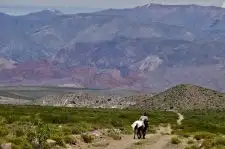
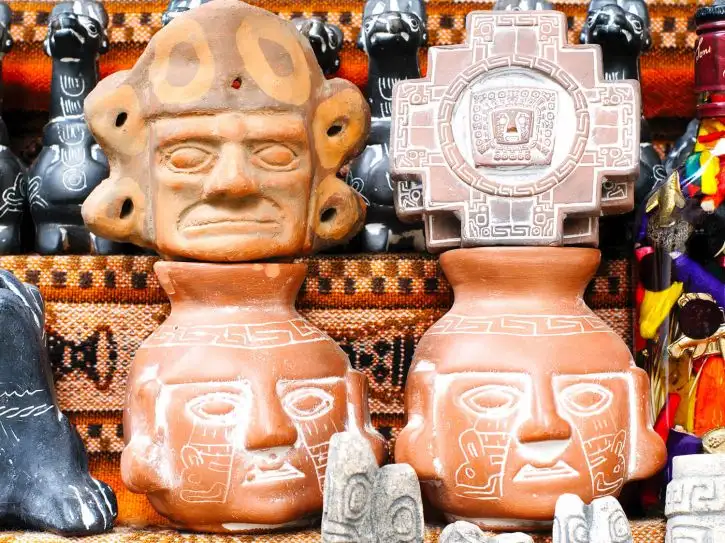
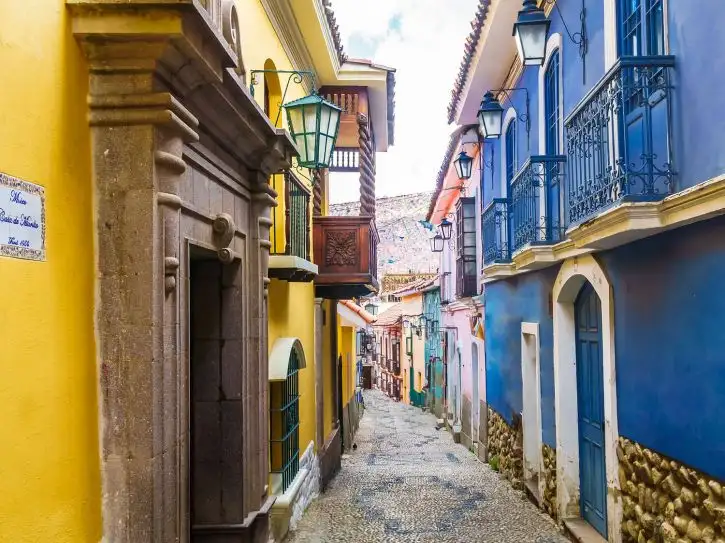
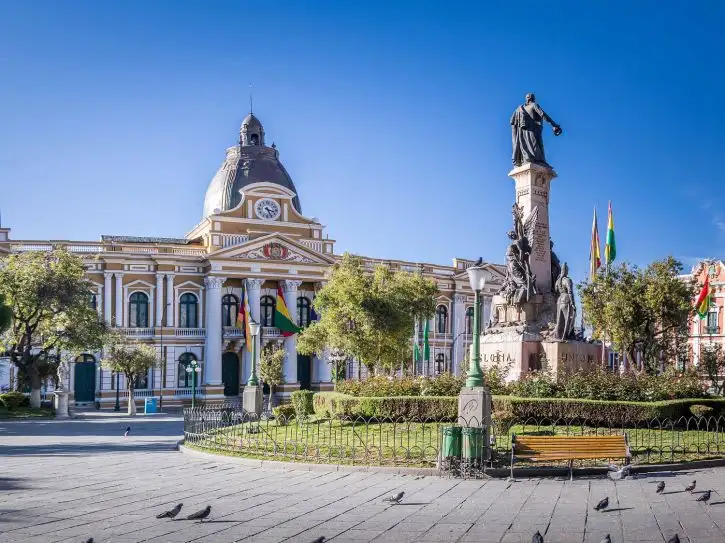
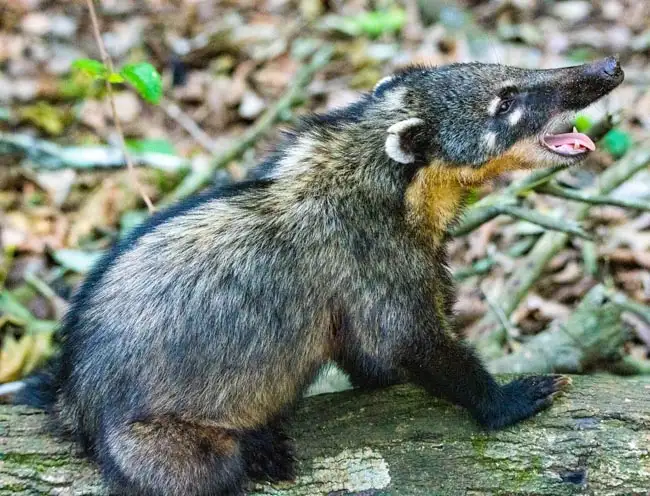
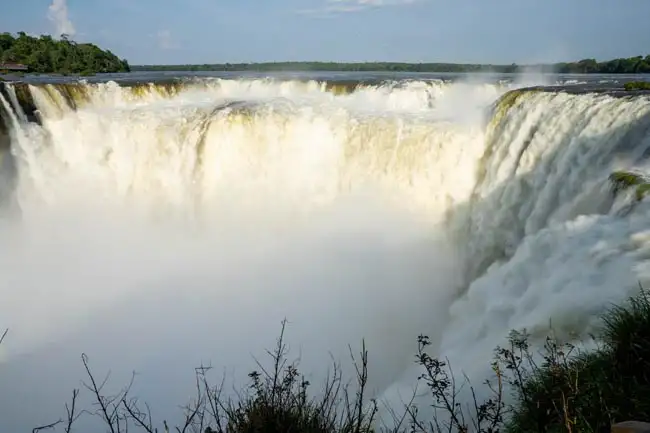
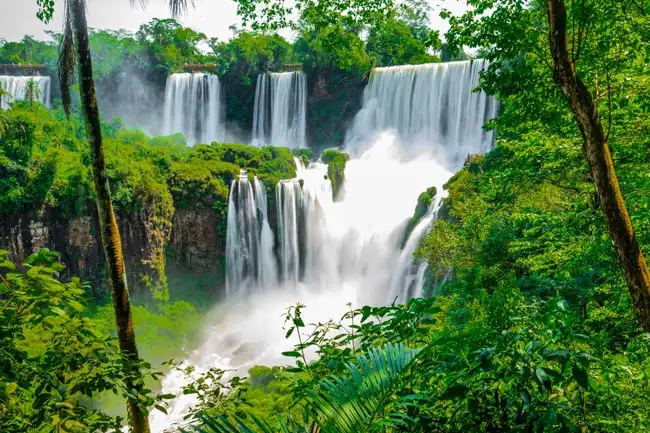
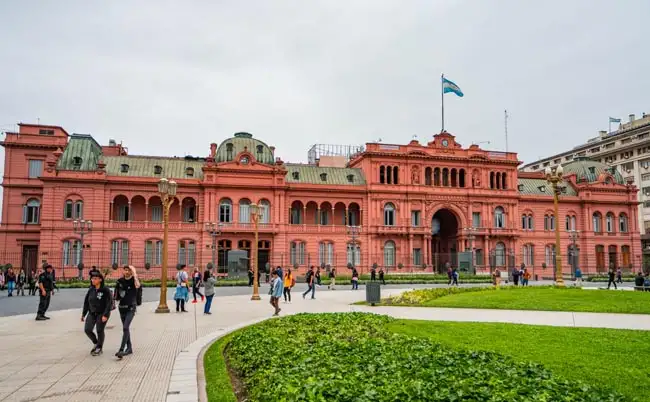
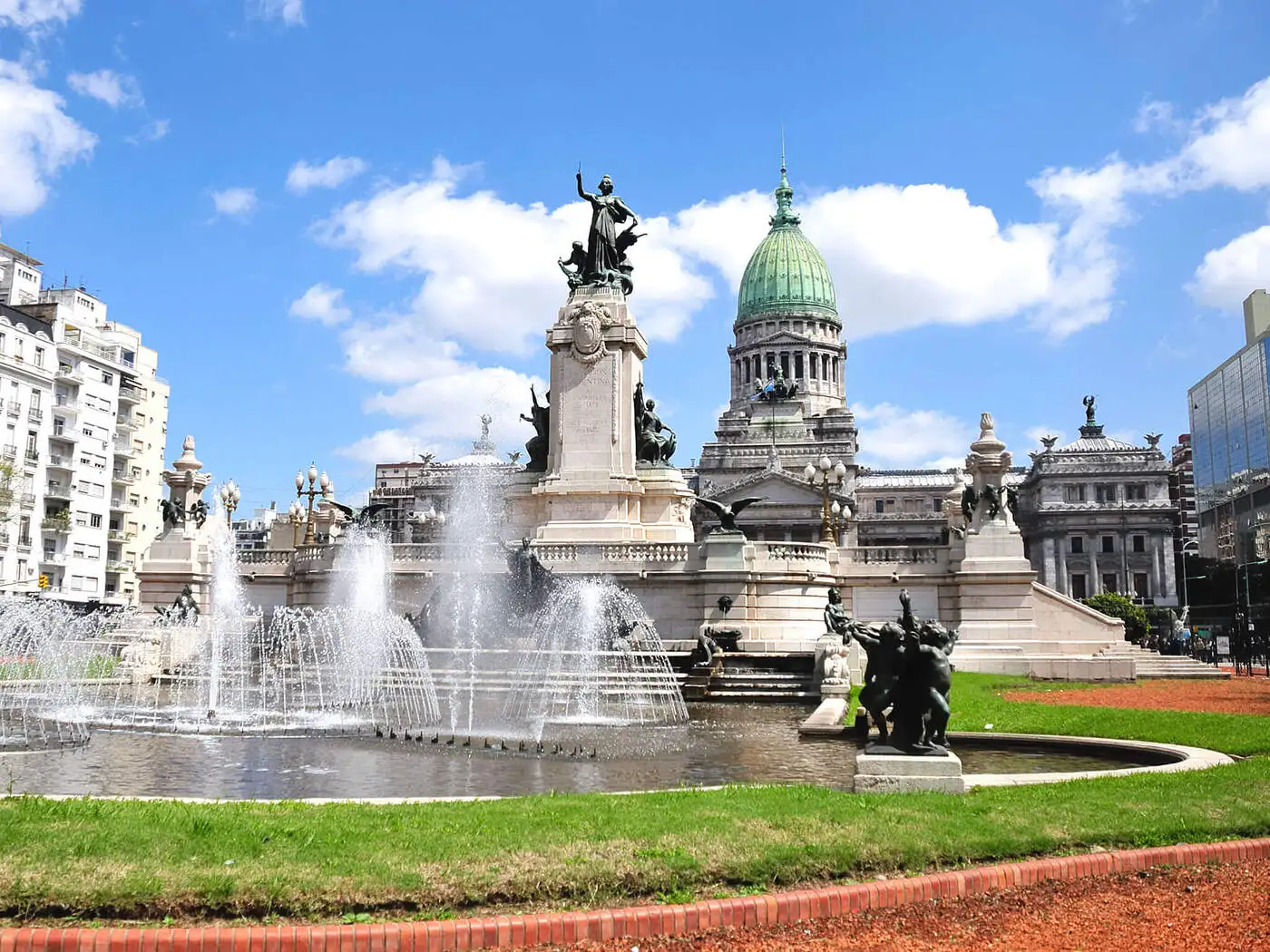
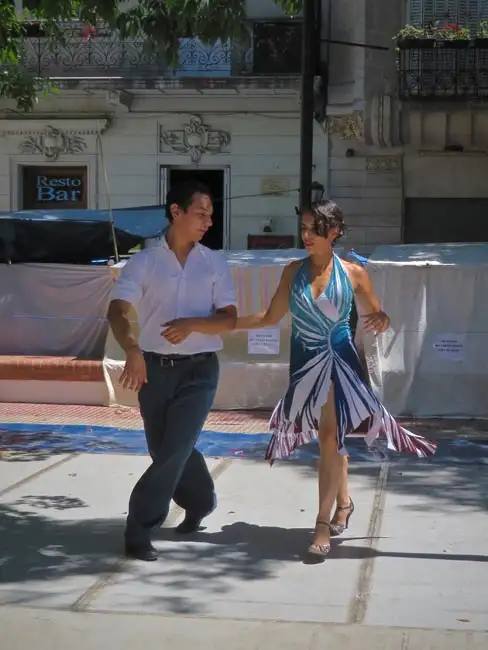
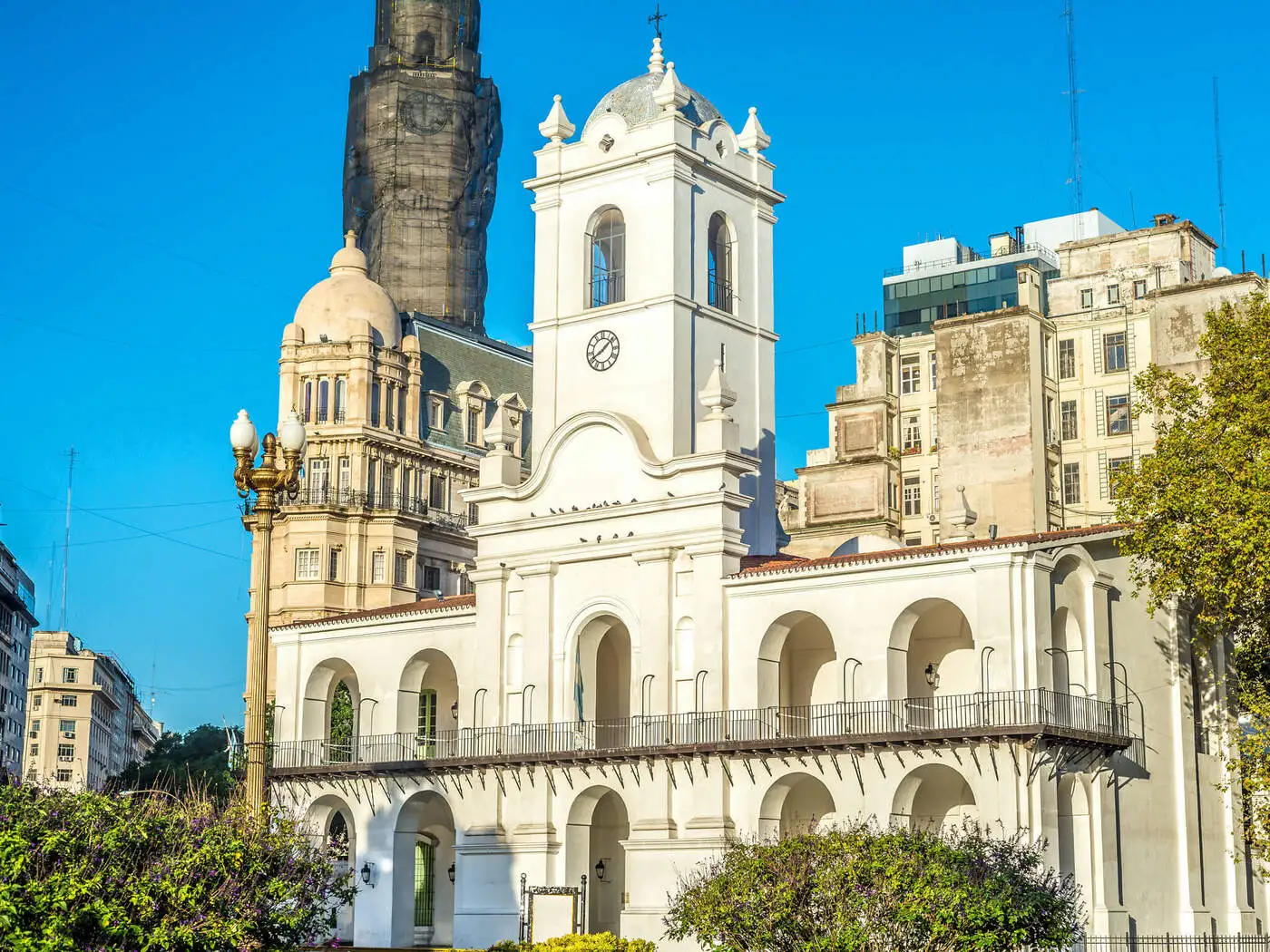
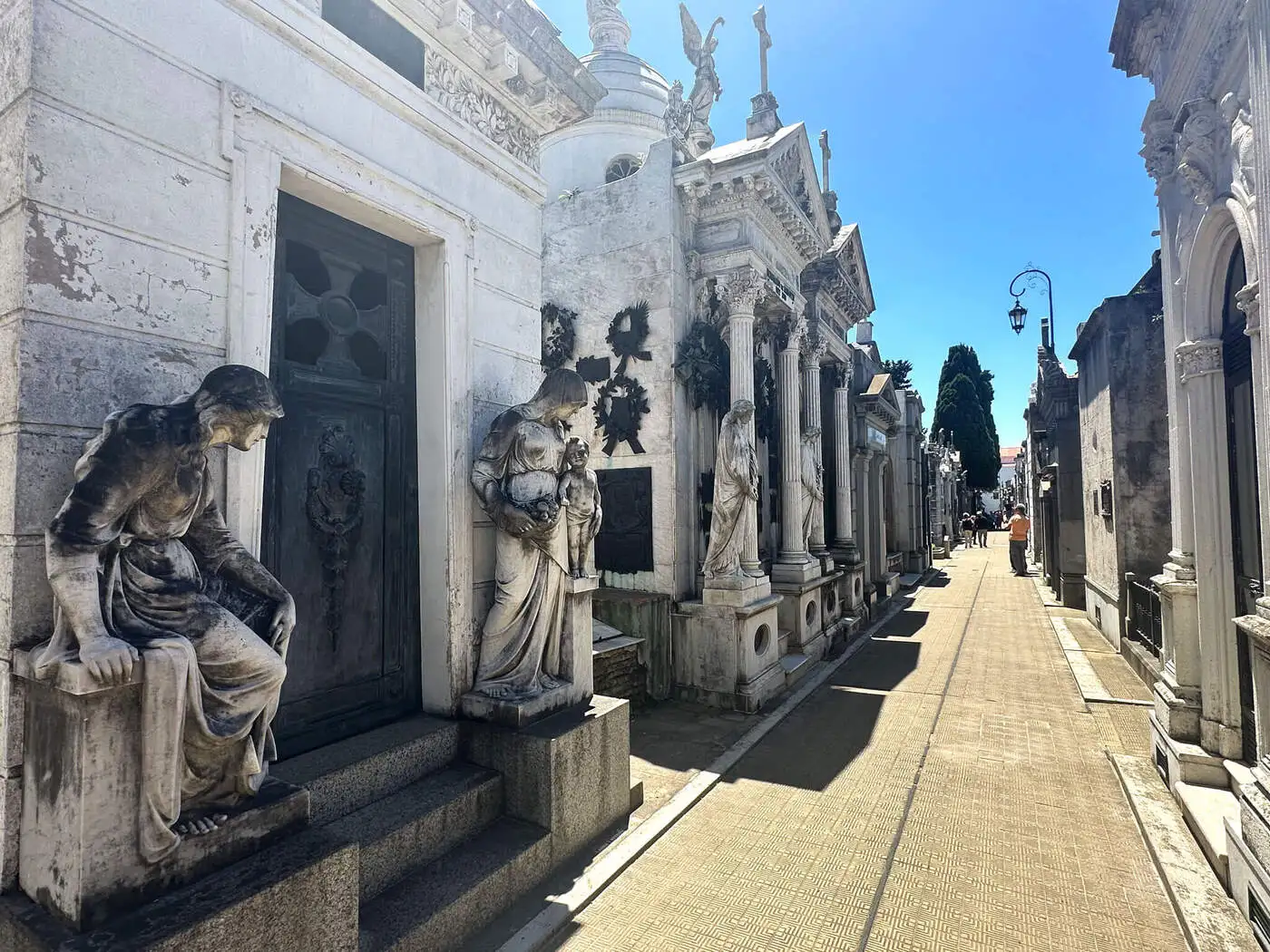
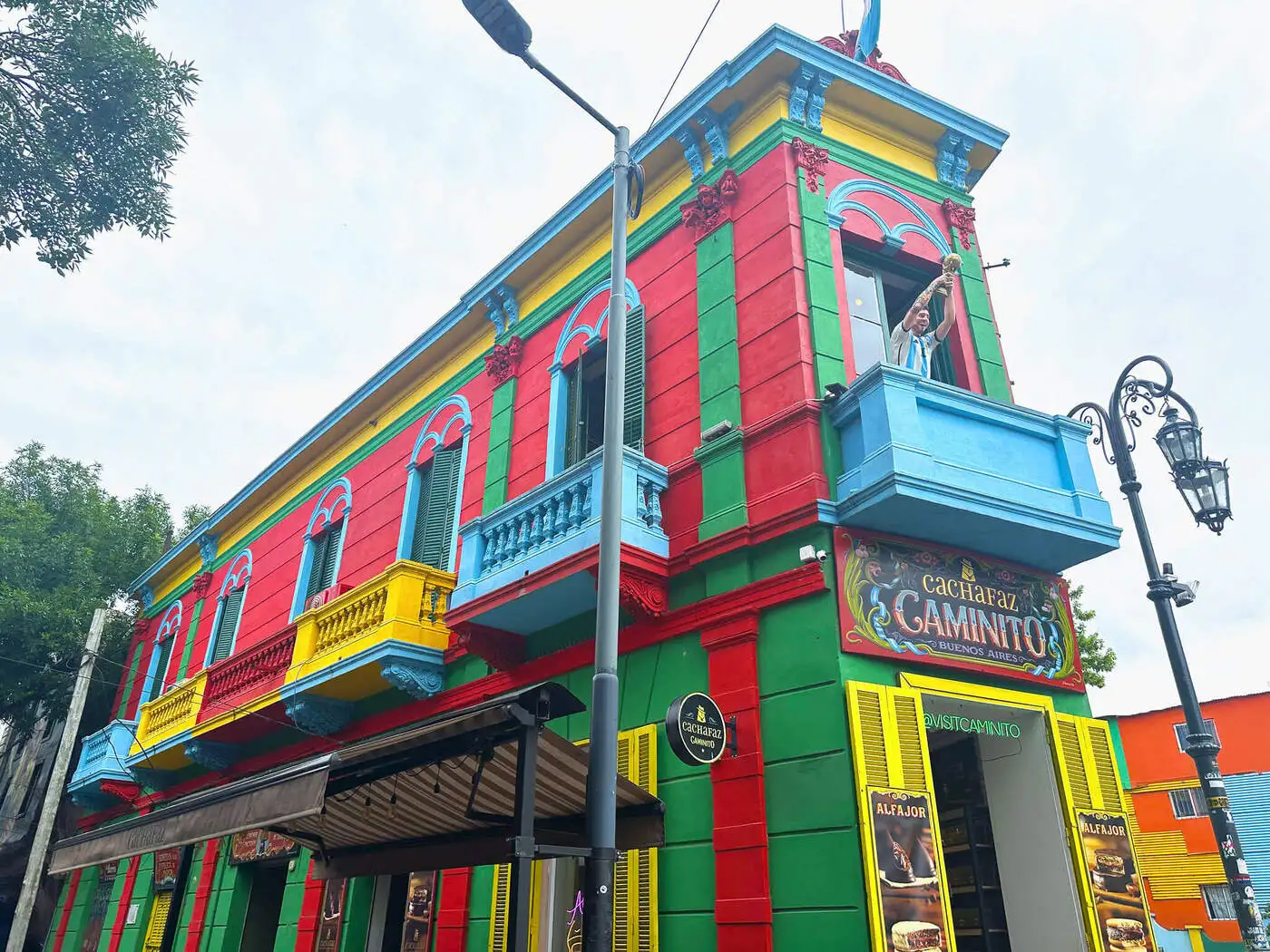
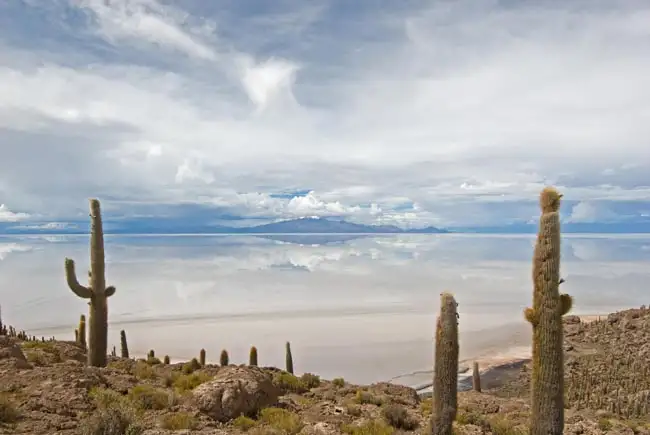
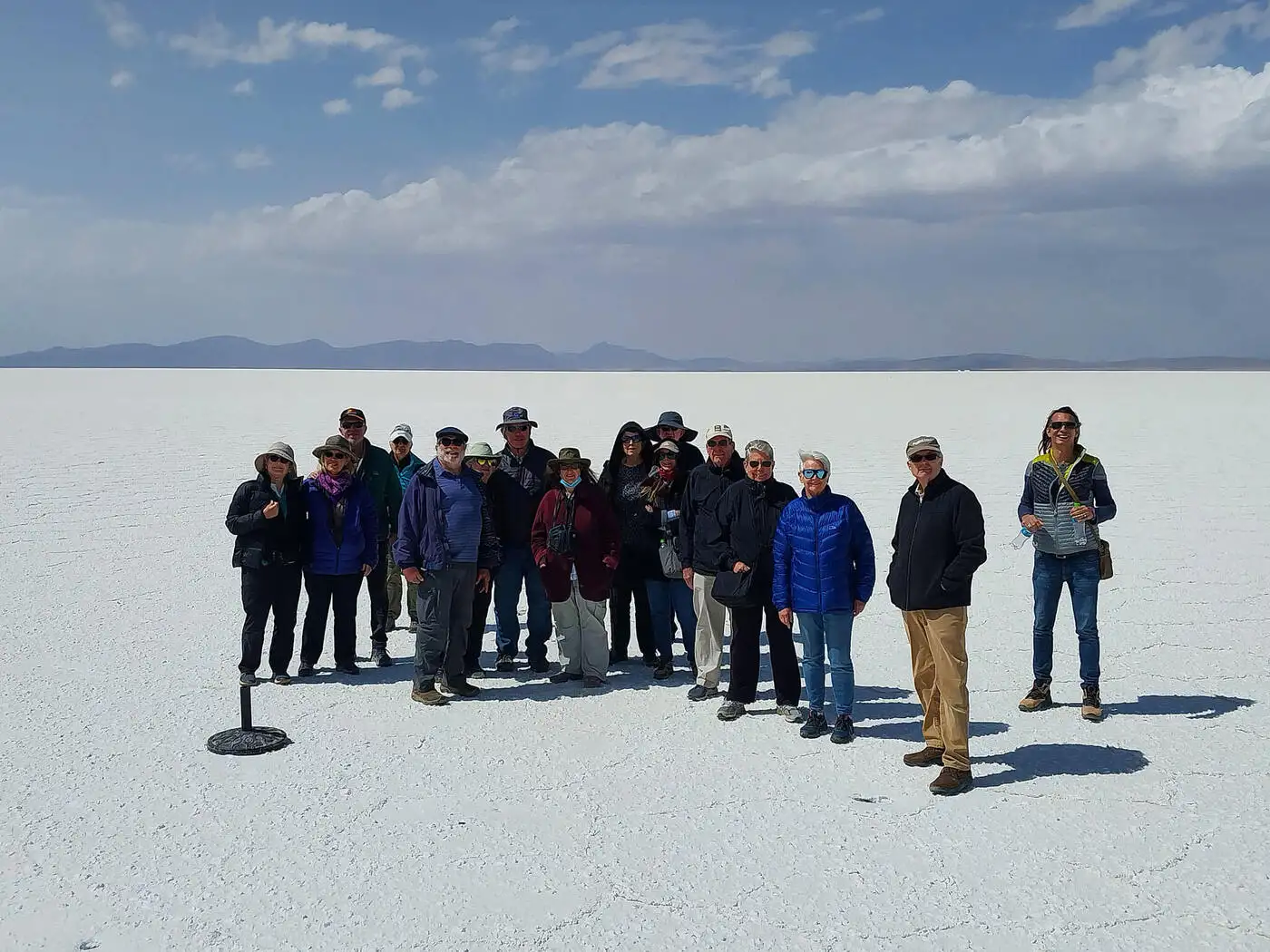
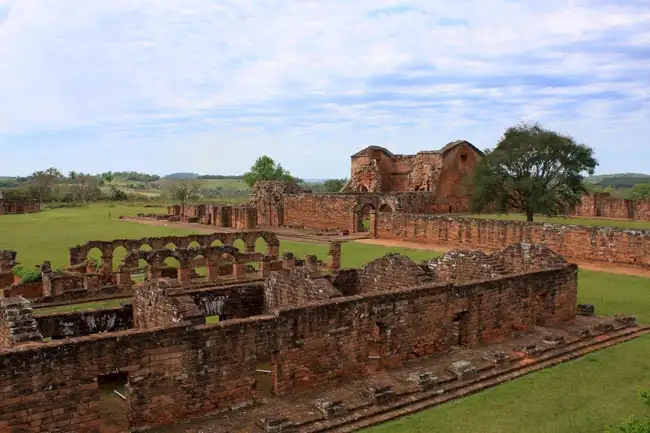
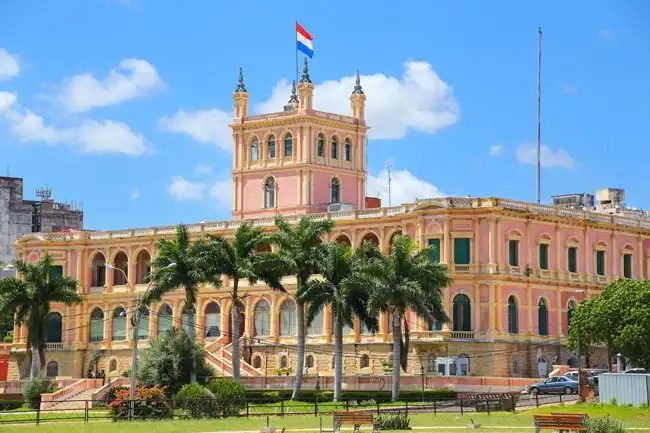
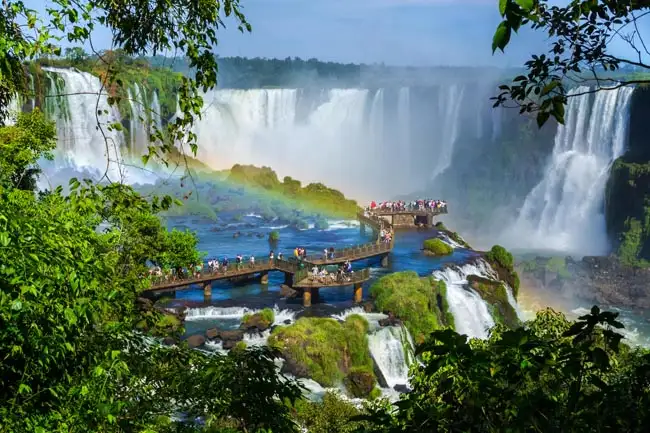
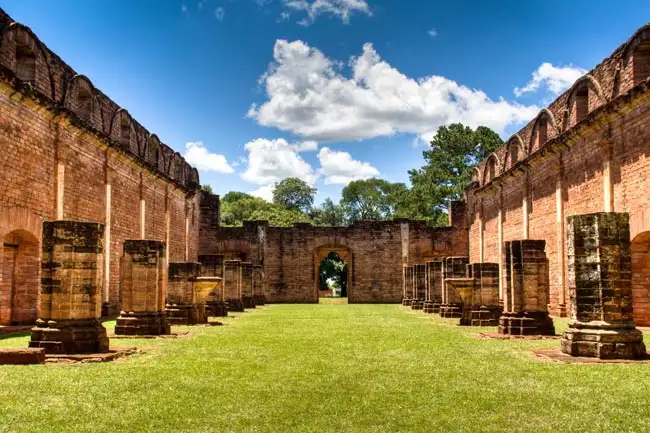
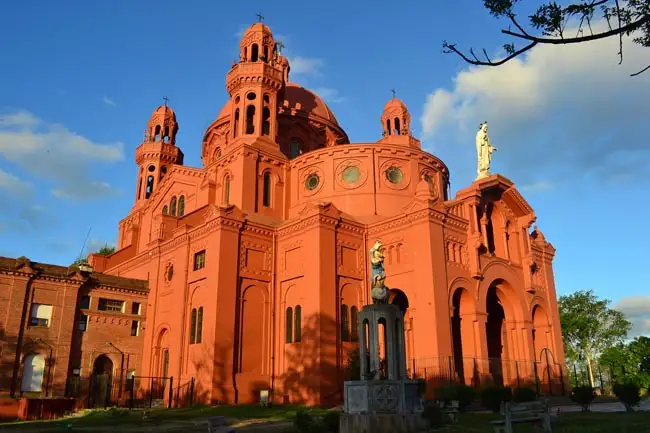
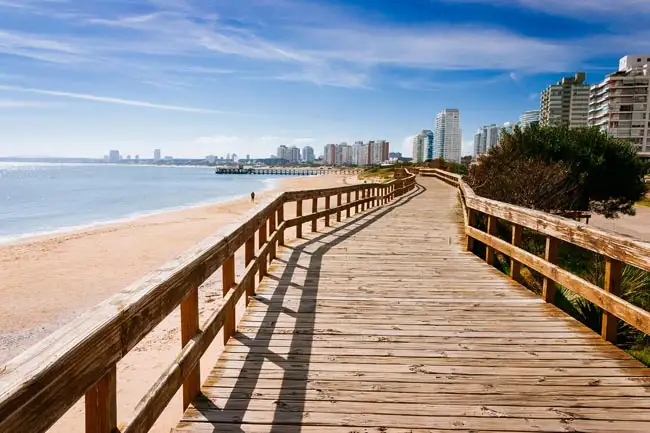
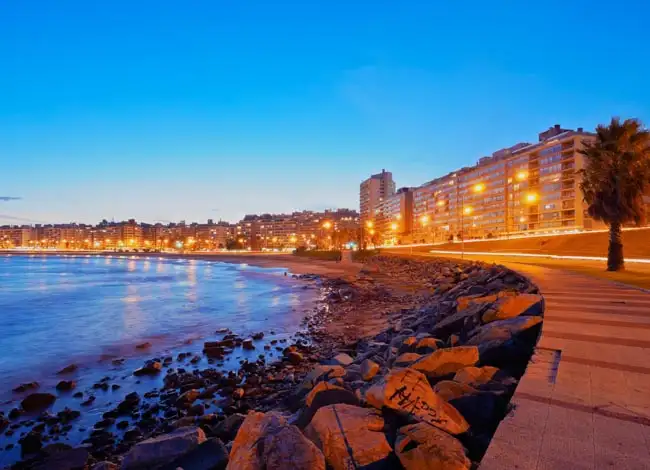
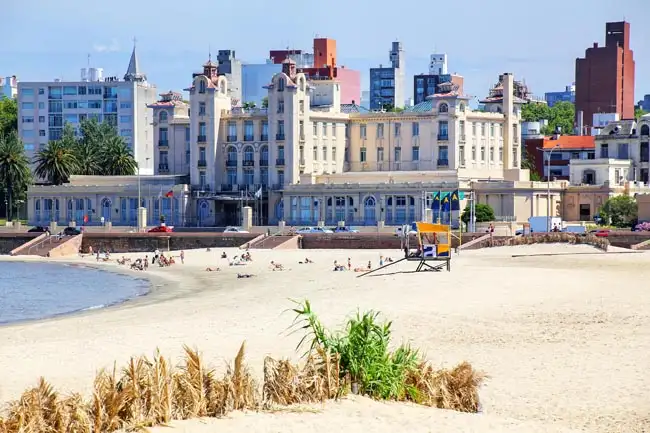
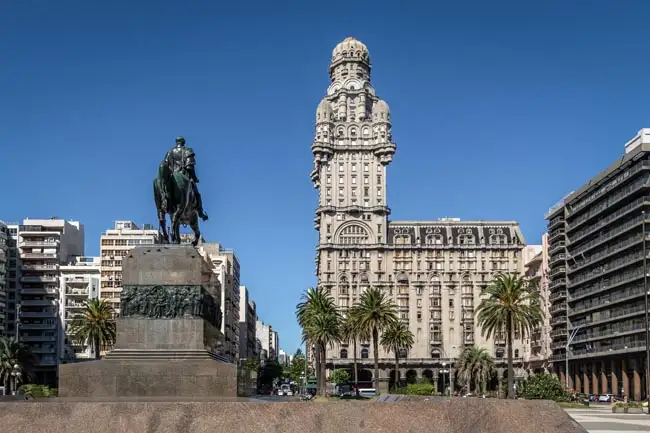
Excellent
Overall Rating
4.6
Extend Your Trip
This tour is part of a series that can be upgraded to make for a longer trip.
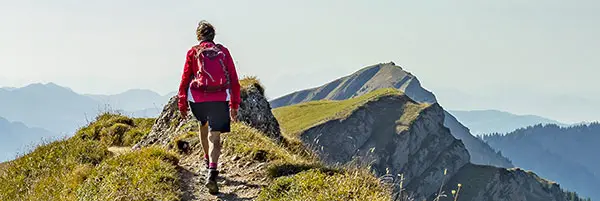
Fast and easy
Book this tour
Book your unforgettable adventure today! For any questions or advice, don't hesitate to contact us.
Have questions?
Contact Us
1-800-665-3998
- Final payment is due 90 days prior to departure.
- A non-refundable $1000 USD deposit is payable at the time of booking
- Optional Single Supplement: $1650 USD (number of singles limited).
This tour may require a mandatory single supplement charge of $1240 USD if you join our share program and we are unable to pair you. - Transferring to another tour or tour date is only permissible outside of 120 days prior to departure and is subject to a $100 USD change fee. (Read our cancellation policy for more info.)
- $1000 deposit required due to nature of internal flights; additional $1000 pre-payment upon 'guarantee." Once paid, both your deposit and $1000 pre-payment becomes 100% non-refundable/non-transferable.
Prices below are per person, twin-sharing costs in US Dollars (USD). Pricing does not include airfare to/from the tour and any applicable taxes. Get general information on flights to/from the tour.
Choose your departure date:
Frequently Asked Questions
- What is the maximum number of participants on a trip?Most of our tours carry a maximum of 18 participants; some tours (ie hiking tours) top out at 16. In the event that we do not achieve our minimum complement by our 90-day deadline, we may offer group members the option of paying a "small-group surcharge" as an alternative to cancellation. If all group members agree, we will confirm the trip at existing numbers; this surcharge is refundable in the event that we ultimately achieve our regular minimum. If the small group surcharge is not accepted, we will offer a refund of your deposit or a different trip of your choice.
- Can I extend my tour either at the beginning or end? What about stopovers?Yes, you can extend your tour either at the beginning or the end and we can book accommodation in our tour hotel. Stopovers are often permitted, depending on air routing. Stopovers usually carry a "stopover" fee levied by the airline.
- How do I make a reservation? How and when do I pay?The easiest way to make a reservation is via our website; during office hours, you are also more than welcome to contact us by telephone.
A non-refundable deposit is payable at the time of booking; if a reservation is made within 90 days, full payment is required. Some trips require a larger deposit. If international airline bookings require a non-refundable payment in order to secure space or the lowest available fare, we will require an increase in deposit equal to the cost of the ticket(s).
Early enrolment is always encouraged as group size is limited and some trips require greater preparation time.
Once we have received your deposit, we will confirm your space and send you a confirmation package containing your trip itinerary, any visa/travel permit related documents, invoice, clothing and equipment recommendations, general information on your destination(s), and forms for you to complete, sign and return to us. Your air e-tickets (if applicable), final hotel list, final trip itinerary, and instructions on how to join your tour, will be sent approximately 2-3 weeks prior to departure. - What about cancellations, refunds, and transfers?Please review our cancellation policy page for details.
- I am a single who prefers my own room. What is a single supplement?All of our tours have a single supplement for those who want to be guaranteed their own room at each location.
This supplement is a reflection of the fact that most hotels around the world do not discount the regular twin-share rate for a room by 50% for only one person occupying a room. Most hotels will give a break on the price, but usually in the range of 25-30% of the twin-share rate. This difference, multiplied by each night, amounts to the single supplement.
The conventional amount can also vary from country to country and some destinations are more expensive than others for single occupancy. In order to be "single friendly," the supplements we apply are not a profit centre for us and we do our best to keep them as reasonable as possible.
On most tours we limit the number of singles available, not to be punitive, but rather because many hotels allow for only a limited number of singles; some smaller hotels at remote locations also have a limited number of single rooms available.
Please note that most single rooms around the world are smaller than twin-share rooms and will likely have only one bed. - Do you have a shared accommodation program?Yes! If you are single traveller and are willing to share, we will do our best to pair you with a same-gender roommate. On most of our tours, if we fail to pair you, we will absorb the single supplement fee and you will default to a single room at no extra charge. At some destinations, however, where single rooms are not significantly discounted, or not at all, we may apply a "mandatory" single in the event that we cannot find you a share partner. This is usually 50% of the usual supplement, but can be as much as 100%. If applicable, this proviso will be noted on each tour page on this website, on your invoice, and in our tour date/price book (available for download under "Resources").
Please choose a departure date!
